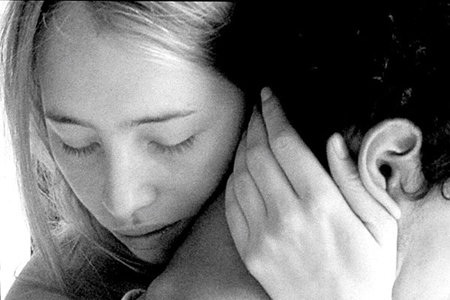Ever since she made her film debut at 14 in La Puce, filmmakers and viewers alike have been fascinated by Isild Le Besco’s face. Her looks are arresting: She manages to look beautiful, homely, smoldering, indifferent—sometimes all at once. She appears to exist entirely outside of time.
But A tout de suite (Right Now) is a film about time, a film about a very particular moment in time, and how a decision made in an instant can change the course of one’s entire life.
When we first encounter Le Besco’s character (who, like all characters in the film, remains nameless until the final credits roll), her life appears to be laid out in front of her. It’s Paris, 1975, and she inhabits a comfortable existence in a large apartment with her father and sister. She half-heartedly attends art school, has affairs with boys, maybe with girls, and tentatively pushes at the boundaries of her bourgeois existence. She wants something more, but has no idea how to break out.
Her escape comes in the form of a French-Moroccan gangster, played by Ouassini Embarek (Baise-moi), possessor of another remarkable face. After they spend the night together, a bank robbery he participates in goes horribly wrong. A bank teller is killed and the police surround the bank, but the robbers take hostages and manage to negotiate their escape. She is listening to the radio reports when he calls and asks if he and his partner can take refuge in her father’s home. She says yes; he says, “See you right away” (“A tout de suite”).
For the duration of the phone call, director Benoîtt Jacquot, who also directed Le Besco in Sade, shows us only Le Besco in close-up. This long, intimate handheld shot draws us in and allows us to watch the shadows and the emotions playing across Le Besco’s magnificent face as she reticently but resolutely makes the decision that will uproot her from her staid existence. Le Besco’s performance is typically subtle but spectacular.
This long, intimate handheld shot draws us in and allows us to watch the shadows and the emotions playing across Le Besco’s magnificent face as she reticently but resolutely makes the decision that will uproot her from her staid existence.
In the next scene, the bank-robber boyfriend comes through her bedroom door with his accomplice. Boy and girl embrace, and again we see Le Besco’s face in and out of shadow as he puts on his robber’s mask.
A tout de suite is very obviously a tribute to the French New Wave, especially in the Paris scenes, but it never feels derivative. Caroline Champetier’s grainy, black-and-white digital cinematography recalls the eras of Godard and Bresson while firmly distinguishing it from mere homage.
It’s during the second act that Champetier is allowed to shine. The crew goes on the lam, to Spain and Morocco and eventually ending up in Greece, where Le Besco’s character is abandoned by her compatriots. Whereas the beginning of the film relied on close-ups to emphasize the claustrophobia she feels, the shots now are wider, brighter, some verging on overexposure. Even with this new palette, Jacquot can still evince the mystery of Le Besco’s inscrutable face: He situates her between his camera and the bright Grecian sun, and we again struggle to read her face in the shadows.
A tout de suite is too languid to be a thriller, too static to be a road movie. It feels familiar, but not comfortable—there’s a sense of unease, of something missing, an unsatisfied desire. A tout de suite is a small film, but complex. Like Le Besco’s face, it’s simultaneously too compelling and disconcerting to turn away from.




